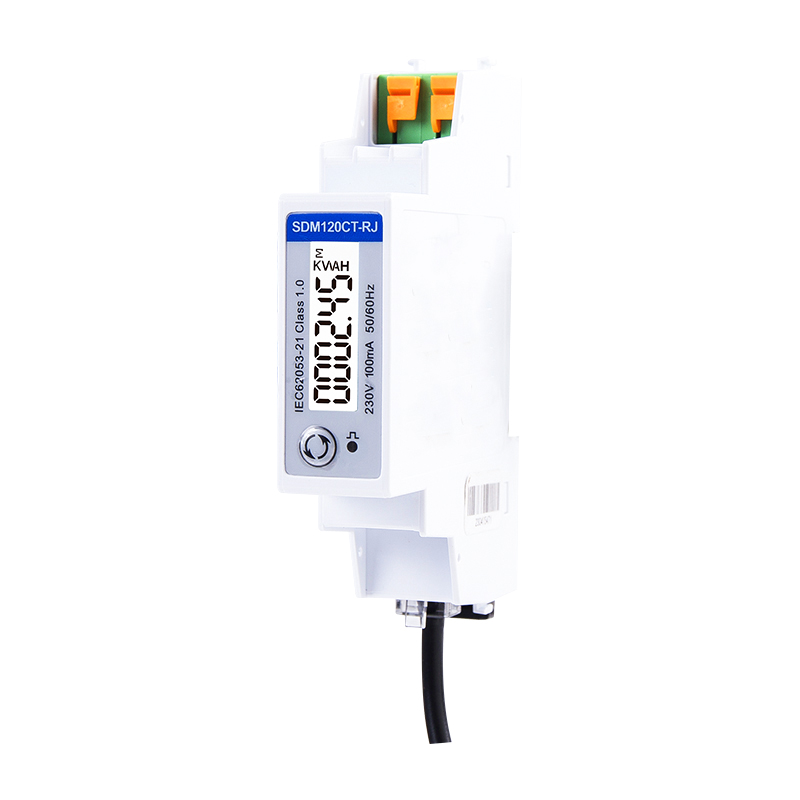Product Consultation
Your email address will not be published. Required fields are marked *

Eastron's DC Energy Meters Powering the Future of EV Charging Infrastructure
Apr 02,2025
What techniques are used in modern power analyzers to compensate for phase shift errors in voltage and current sensors?
Apr 02,2025
Mid-Certification Standards Unpacked: A Deep Dive into EN50470-1/3 vs. EN50470-3:2022 and Their Impact on Smart Metering
Mar 28,2025The integration of a multi-function energy meter with smart grid systems involves several key aspects, including communication protocols, data exchange, monitoring and control capabilities, and interoperability. Here’s a detailed explanation:
Communication Protocols
Standardized Protocols:
Modbus: A widely used protocol for serial communication, enabling devices to exchange information efficiently.
DLMS/COSEM: Device Language Message Specification/Companion Specification for Energy Metering is a standard protocol for smart metering, ensuring interoperability and secure data exchange.
IEC 61850: A standard for the design of electrical substation automation, enabling seamless integration and communication between devices.
BACnet: Building Automation and Control networks protocol is used for integrating energy meters into building management systems.
Wireless Communication:
Wi-Fi: Allows energy meters to connect to local area networks for data transmission.
Zigbee: A low-power, wireless mesh network standard ideal for communication between energy meters and smart grid components.
LoRaWAN: Long Range Wide Area Network suitable for transmitting data over long distances in smart grid applications.
Data Exchange and Interoperability
Real-Time Data Transmission:
Data Logging and Storage: Energy meters collect and store data on parameters such as voltage, current, power, energy consumption, and power quality.
Real-Time Monitoring: Data is transmitted to the smart grid in real-time, enabling continuous monitoring and quick response to changes in the grid.
Interoperability:
Standards Compliance: Compliance with international standards ensures that the energy meter can communicate effectively with other smart grid devices and systems.
APIs and Middleware: Application Programming Interfaces (APIs) and middleware solutions facilitate the integration of energy meters with various smart grid platforms and software.
Monitoring and Control Capabilities
Demand Response:
Load Shedding: Energy meters help in identifying non-essential loads that can be temporarily reduced or turned off during peak demand periods to stabilize the grid.
Demand-Side Management: Real-time data from energy meters allows utilities to implement demand-side management strategies, optimizing energy use and reducing peak load.
Energy Efficiency:
Energy Usage Analysis: Detailed data helps consumers and utilities analyze energy usage patterns, identify inefficiencies, and implement measures to reduce consumption.
Automated Controls: Integration with building management systems enables automated control of HVAC, lighting, and other systems based on real-time energy data.

Advanced Features and Smart Grid Integration
Power Quality Monitoring:
Harmonics Analysis: Energy meters monitor and report on harmonic distortions, helping maintain power quality and reduce equipment wear.
Voltage Stability: Real-time monitoring of voltage levels ensures stability and helps in taking corrective actions promptly.
Integration with Renewable Energy Sources:
Net Metering: Energy meters support net metering, allowing consumers with solar panels or wind turbines to measure the energy they generate and feed back into the grid.
Energy Storage Systems: Meters integrate with battery storage systems to manage energy supply and demand, optimizing the use of renewable energy.
Smart Grid Analytics:
Predictive Maintenance: Data from energy meters can be used for predictive maintenance of grid infrastructure, reducing downtime and improving reliability.
Grid Optimization: Advanced analytics help in optimizing grid operations, balancing supply and demand, and enhancing overall efficiency.
Security and Data Privacy
Data Encryption:
Secure Data Transmission: Encryption protocols ensure that data transmitted between the energy meter and the smart grid is secure and protected from unauthorized access.
Authentication and Authorization: Implementing robust authentication and authorization mechanisms prevents unauthorized access to the energy meter and the data it collects.
Privacy Measures:
Data Anonymization: Personal data is anonymized to protect consumer privacy while allowing for the analysis and use of energy consumption data.
Scalability and Future-Proofing
Scalable Infrastructure:
Modular Design: Energy meters with modular designs can be easily upgraded or expanded to meet growing demand and new functionalities.
Firmware Updates: Over-the-air firmware updates ensure that energy meters can adapt to new standards, protocols, and features without the need for physical replacements.
Emerging Technologies:
Internet of Things (IoT): IoT integration allows energy meters to connect with a wide range of devices and systems, enhancing their functionality and enabling new applications.
Artificial Intelligence and Machine Learning: These technologies can be used to analyze data from energy meters, providing insights and enabling predictive analytics for better grid management.
Multi-function energy meters integrate with smart grid systems through standardized communication protocols, real-time data exchange, advanced monitoring and control capabilities, and ensuring interoperability with other smart grid components. This integration enhances the efficiency, reliability, and sustainability of the smart grid.
Your email address will not be published. Required fields are marked *
We develop and produce high performance electricity meters, power analyzers, current sensors, communication modules and management systems. China Custom Smart Meters Manufacturers and Factory
Address: NO 52, Dongjin Road, Nanhu, Jiaxing, Zhejiang, China
Copyright @ Eastron Electronic Co., Ltd. All rights reserved Electricity Meters Manufacturers
